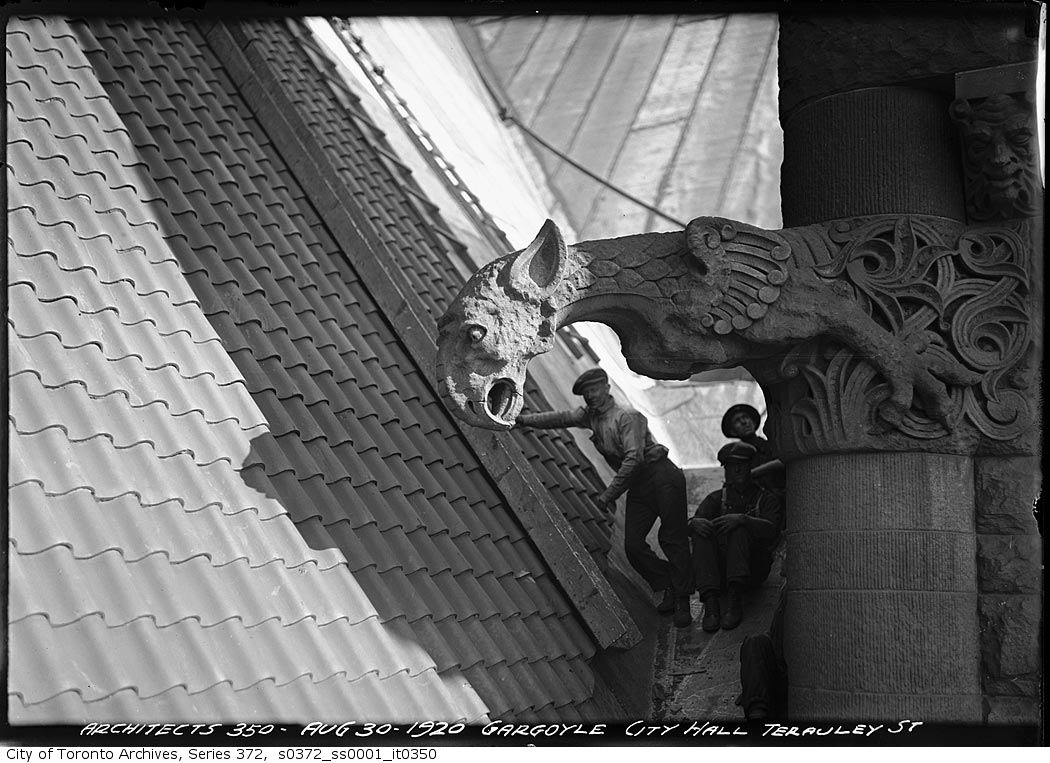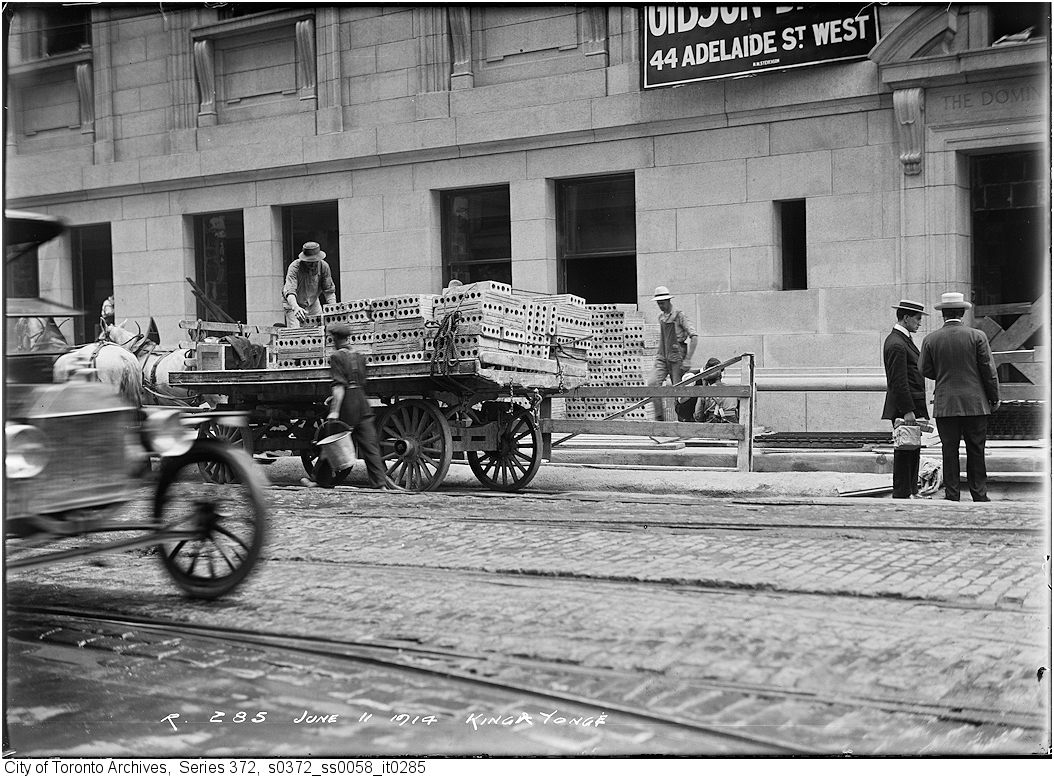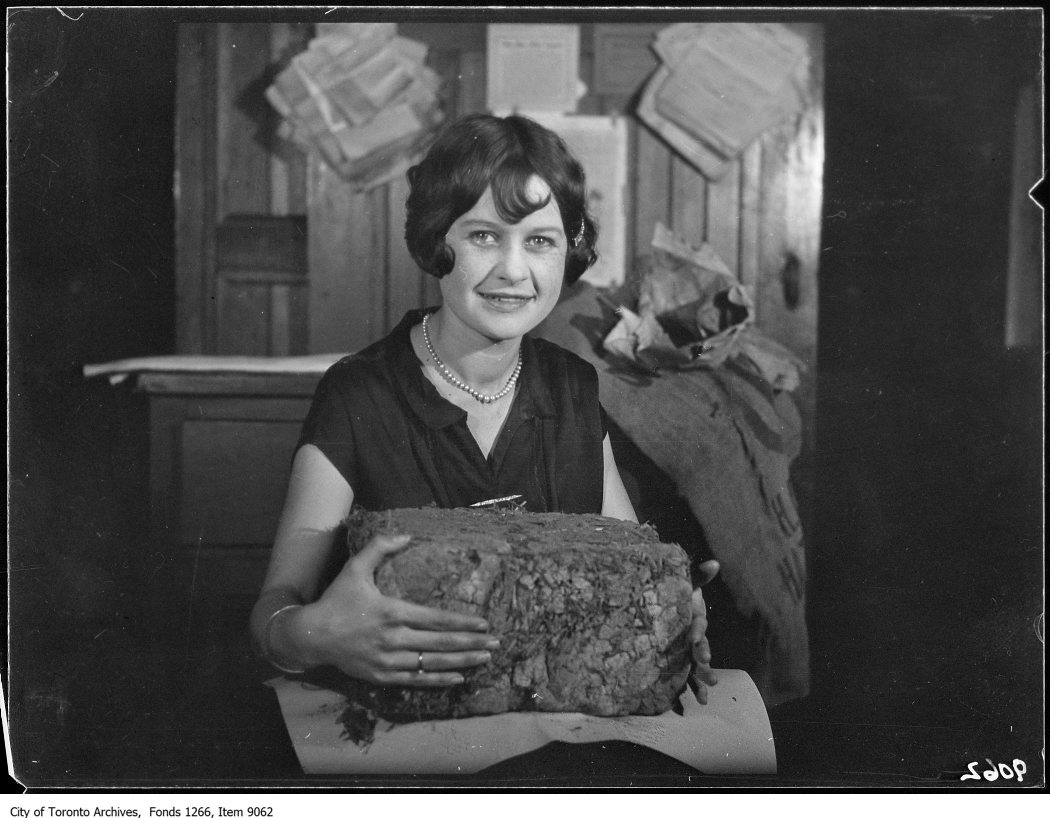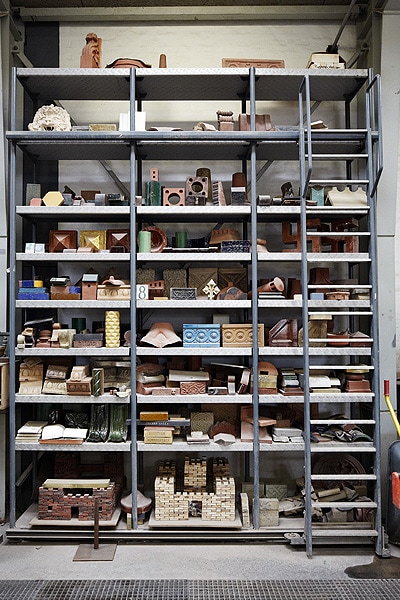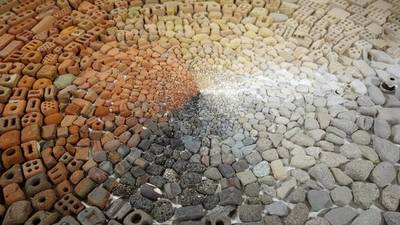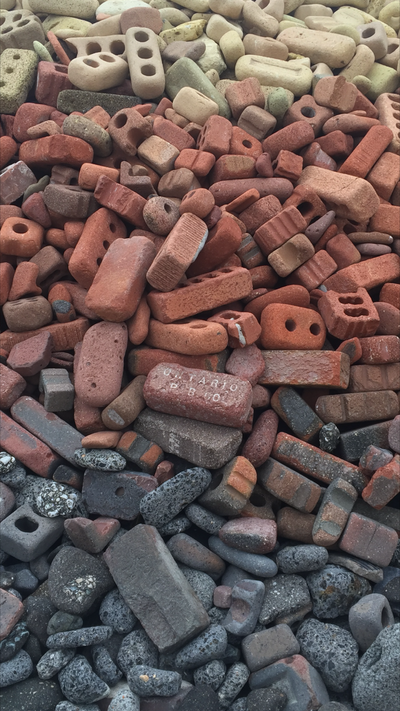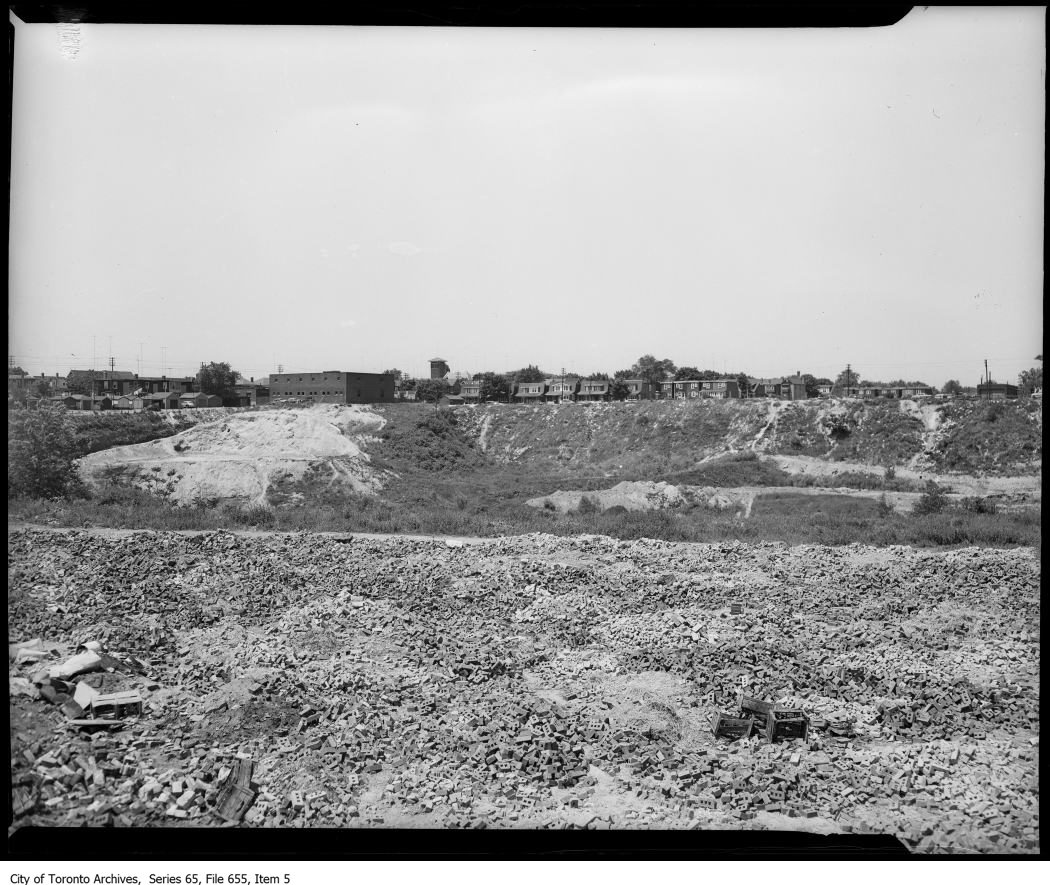|
I plan on making my way to the Don River Valley Park Art Trail this spring, where artist Duane Linklater will get us looking at the trajectory of Toronto’s history and the changes made to the natural environment with the development of cities in settler societies.
Looking at the workers leaning on the Old City Hall majestic Gargoyles in these stunning photographs, one cannot help but admire the craftsmanship which ties our knowledge of historical buildings to our hands and earth. We remember that the tactility of details was, is, should be important. There is a sensation evoked by the materiality of stone, of brick, of their voice. Our connection to clay in Toronto one of great physical presence, and one I believe to be too often disregarded. I am drawn to artists Linklater and Ben Watt-Meyer who investigate themes of archeology, architecture and social history. Tracing the Mills along the Don River, it was this beautiful photograph of Miss Hodgson, holding the massive brick of clay, stating the importance of this lump, which keeps leading me back to the material, to reaction. Peter Zumthor delivered an enthralling lecture in 2003, in which he lead his audience to Atmospheres, thus, materials. Materials react with one another and have their radiance, so that the material composition gives rise to something unique. Material is endless. Take a stone; you can saw it, grind it, drill into it, split it, or polish it - it will become a different thing each time. Then take tiny amounts of the same stone, or huge amounts, and it will turn into something else again. I believe when walking along the Don River this spring, engaging with past building materials, Linklater will perhaps be bridging time, maybe raise awareness.
0 Comments
Leave a Reply. |
about the authorThe blog connects thoughts on Landscape and Architecture, design, and mostly the connections between landscape architecture, art and our beautiful Toronto. archives
February 2022
|
